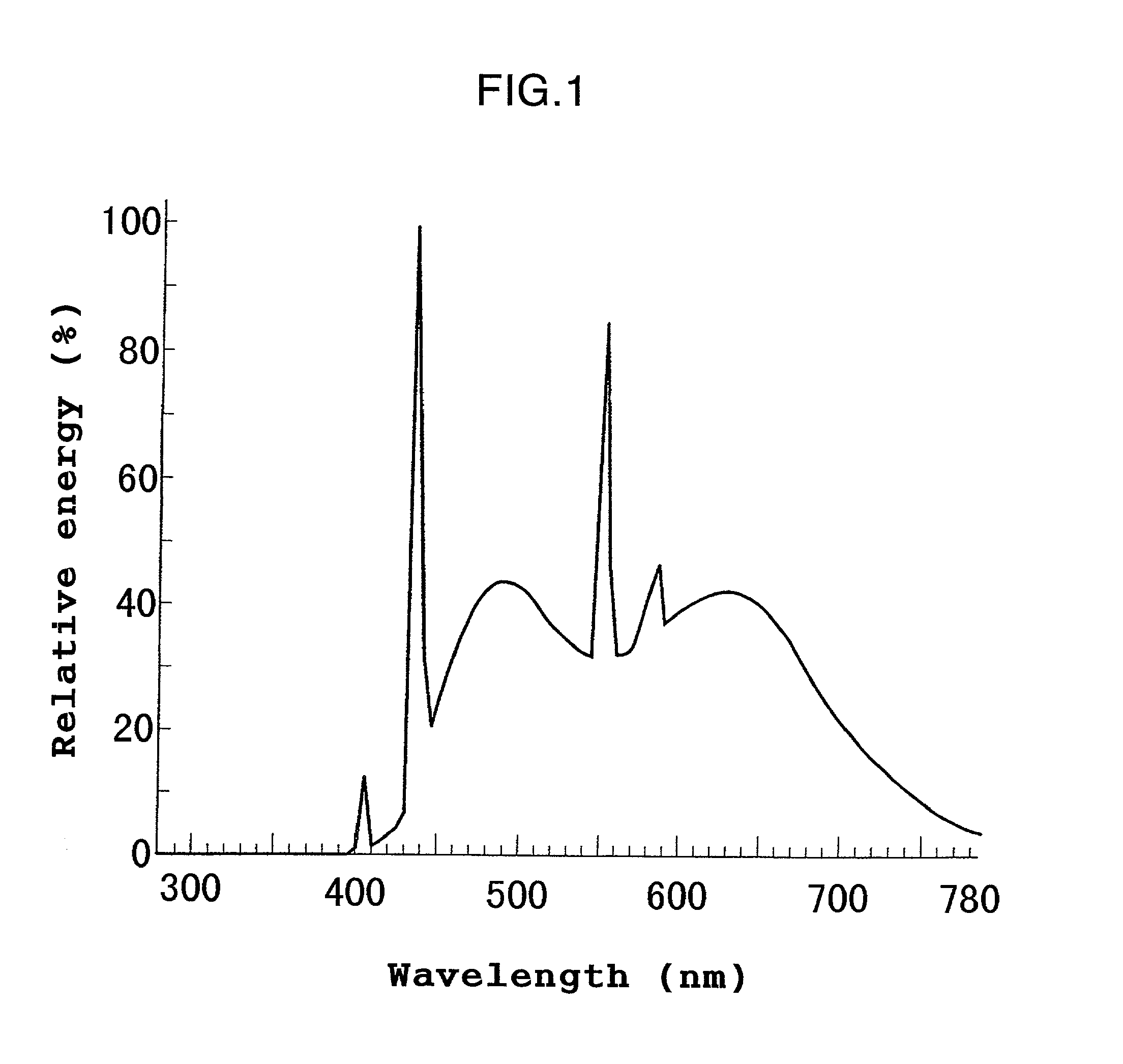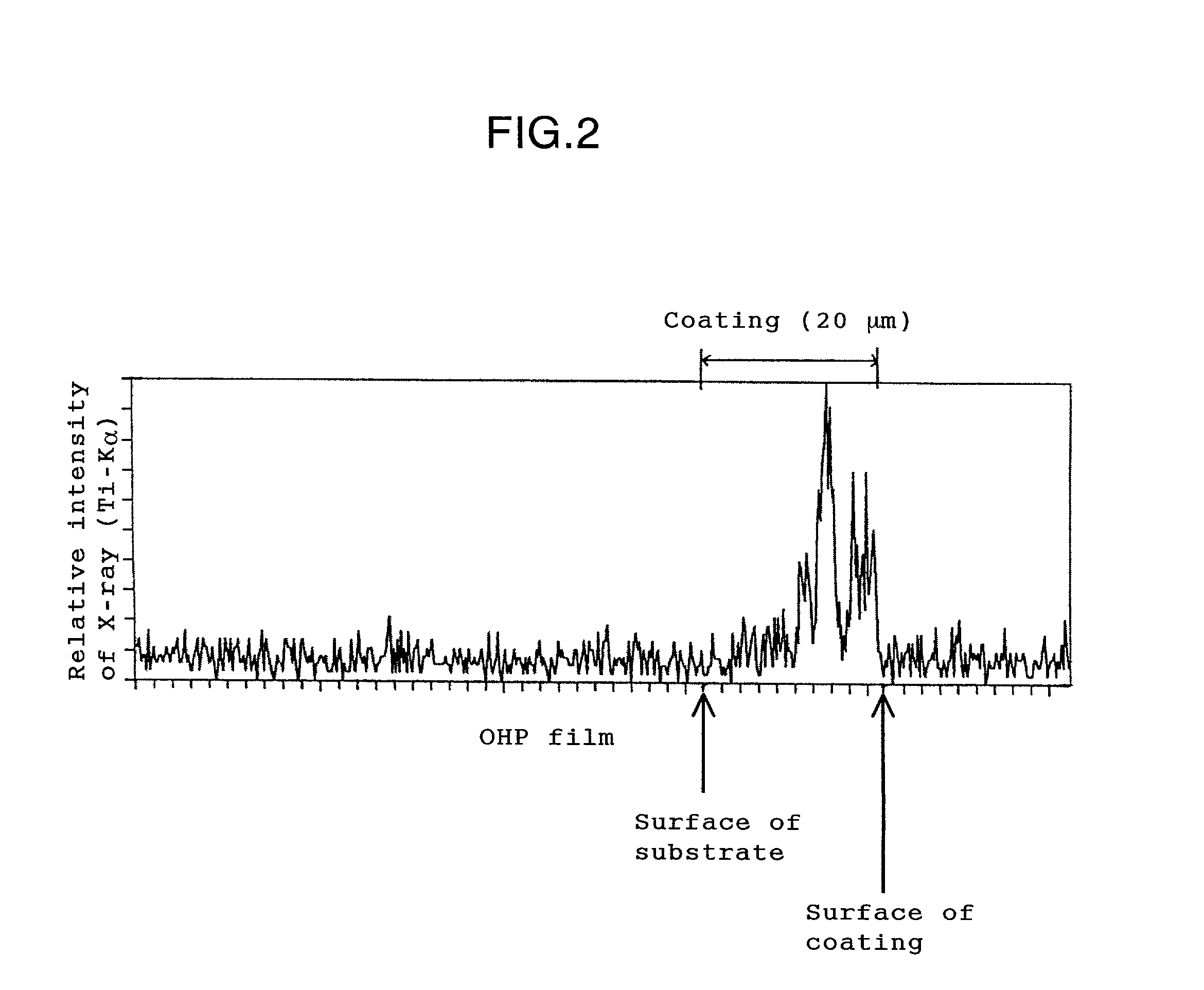Modified photocatalyst sol
a photocatalyst and sol technology, applied in the field of modified photocatalyst sol, can solve the problems of difficult immobilization of the photocatalyst, calcination, and inability to allow the photocatalyst to exhibit its effect on so as to prevent fogging and effectively prevent dirt from adhering to the surface of the substra
- Summary
- Abstract
- Description
- Claims
- Application Information
AI Technical Summary
Benefits of technology
Problems solved by technology
Method used
Image
Examples
reference example 1
Synthesis of Water-Soluble Silicon Compound (1) Containing an Si—H Group
[0397]500 g of dioxane and 500 g of KF9901 (trade name of a methylhydrogensiloxane-dimethylsiloxane copolymer; Si—H group content: 7.14 mmol / g which is a value described in the catalog, weight average molecular weight: 3,900) (manufactured and sold by Shin-Etsu Chemical Co., Ltd., Japan) were charged into a reactor equipped with a reflux condenser, a thermometer and a stirrer, and the resultant mixture in the reactor was heated to 80° C. while stirring.
[0398]1,370 g of Uniox MUS-8 (trade name of a polyoxyethylene allyl methyl ether; weight average molecular weight: 800 which is a value described in the catalog) (manufactured and sold by Nippon Oil & Fats Co., Ltd., Japan) and 5 g of a 5% by weight isopropanol solution of hydrogen hexachloroplatinate(IV) hexahydrate were dissolved in 2,310 g of dioxane. The resultant solution was charged into the above-mentioned reactor over approximately one hour at 80° C. while...
reference example 2
Synthesis of Silicon Compound (2) Containing an Si—H Group, which is Self-Emulsifiable in Water
[0401]170 g of dioxane and 100 g of HMS-301-100GM (trade name of a methylhydrogensiloxane-dimethylsiloxane copolymer; Si—H group content: 4.523 mmol / g, weight average molecular weight: 5,400) (manufactured and sold by CHISSO Corporation, Japan) were charged into a reactor equipped with a reflux condenser, a thermometer and a stirrer, and the resultant mixture in the reactor was heated to 80° C. while stirring.
[0402]50 g of Uniox MUS-8 (which is the same as in Reference Example 1 above), 25 g of 5-norbornene-2,3-dicarboxylic anhydride and 1.07 g of a 5% by weight isopropanol solution of hydrogen hexachloroplatinate (IV) hexahydrate were dissolved in 170 g of dioxane. The resultant solution was charged into the above-mentioned reactor over approximately one hour at 80° C. while stirring, and the resultant mixture in the reactor was stirred at 80° C. for 3 hours and, then, cooled to room temp...
example 1
[0405]200 g of Tinoc A-6 (trade name of an ammonia-peptized sol of anatase-type titanium oxide; volume mean particle diameter of particles dispersed in the sol: 13 nm, TiO2 content: 6% by weight, average crystallite diameter: 10 nm which is a value described in the catalog) (manufactured and sold by TAKI CHEMICAL CO., LTD., Japan) was charged into a reactor equipped with a reflux condenser, a thermometer and a stirrer. Subsequently, 12.5 g of the solution of compound (1) obtained in Reference Example 1 was charged into the reactor over approximately 30 minutes at 30° C. while stirring, and the resultant mixture in the reactor was stirred for 3 hours at 30° C. to effect a reaction of Tinoc A-6 with compound (1) and modify the TiO2 particles of Tinoc A-6 to thereby obtain a sol containing particles of modified titanium oxide (hereinafter referred to as “modified TiO2 particles”) well dispersed therein, wherein the volume mean particle diameter of the modified TiO2 particles was 20 nm....
PUM
| Property | Measurement | Unit |
|---|---|---|
| volume mean particle diameter | aaaaa | aaaaa |
| volume mean particle diameter | aaaaa | aaaaa |
| surface energy | aaaaa | aaaaa |
Abstract
Description
Claims
Application Information
 Login to View More
Login to View More - R&D
- Intellectual Property
- Life Sciences
- Materials
- Tech Scout
- Unparalleled Data Quality
- Higher Quality Content
- 60% Fewer Hallucinations
Browse by: Latest US Patents, China's latest patents, Technical Efficacy Thesaurus, Application Domain, Technology Topic, Popular Technical Reports.
© 2025 PatSnap. All rights reserved.Legal|Privacy policy|Modern Slavery Act Transparency Statement|Sitemap|About US| Contact US: help@patsnap.com



